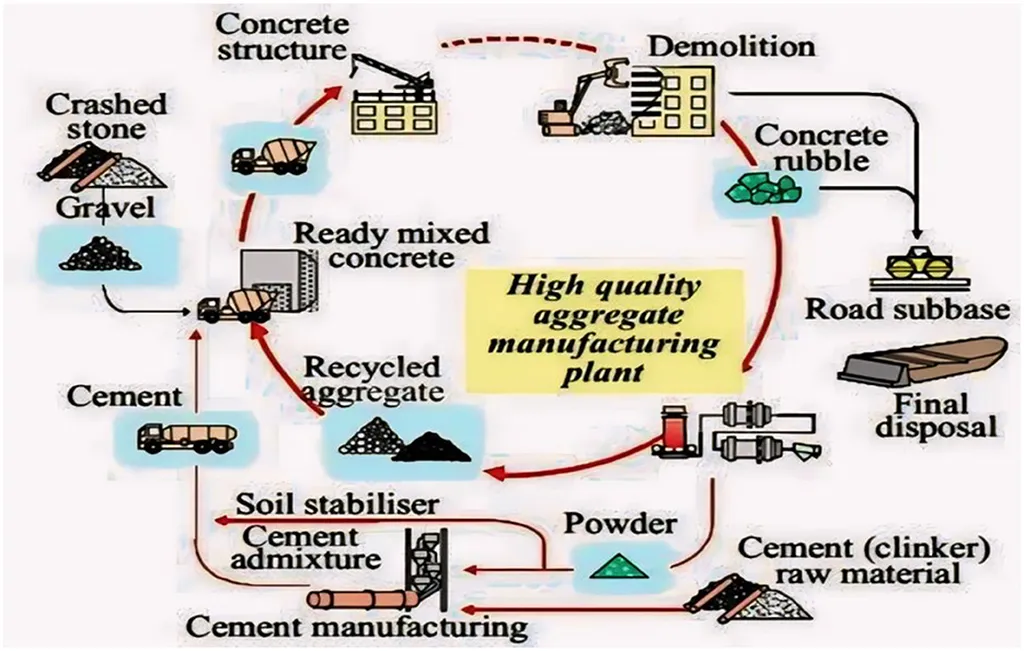In the heart of Saudi Arabia, a groundbreaking study led by Hany A. Dahish from the Department of Civil Engineering at Qassim University is revolutionizing the way we think about sustainable concrete. The research, published in the journal *Buildings* (which translates to “المباني” in Arabic), is paving the way for a greener future in construction by harnessing the power of waste materials and advanced predictive models.
The study focuses on the use of marble waste powder (MWP) and granite waste powder (GWP) as partial replacements for cement in concrete, a move that not only reduces the environmental impact of cement production but also promotes the reuse of industrial waste. “The rapid development in building construction has stimulated the replacement of cement in concrete with construction waste materials,” Dahish explains. This shift towards sustainability is crucial, as the construction industry seeks to minimize its carbon footprint and optimize resource efficiency.
The research employs two advanced predictive tools: Response Surface Methodology (RSM) and, for the first time in this context, the Neural Network Algorithm (NNA). These tools evaluate the synergistic effect of using GWP and MWP as partial cement replacements in concrete exposed to elevated temperatures. The study considered four key variables: the replacement levels of GWP and MWP, the degree of temperature (up to 800 °C), and the exposure duration (up to 2 hours). The goal was to predict the compressive strength (CS) of the concrete under these conditions.
The findings are impressive. The quadratic model derived from RSM outperformed the linear model in predicting the CS of concrete. However, the NNA model also showed high predictive accuracy, effectively capturing the complex and nonlinear relationships among the variables. “The optimization results revealed that the maximum compressive strength of 39.4 MPa can be achieved at specific levels of GWP, MWP, temperature, and exposure duration,” Dahish notes.
The implications of this research are far-reaching. By optimizing the use of waste materials in concrete, the construction industry can significantly reduce its environmental impact while maintaining high performance standards. This is particularly relevant for the energy sector, where the demand for sustainable and durable construction materials is growing. The models developed in this study provide valuable insights into the synergistic effects of granite and marble waste powders, supporting the design of sustainable, high-performance concrete with a reduced environmental footprint.
As the world moves towards a more sustainable future, research like Dahish’s is crucial. It not only advances our understanding of sustainable construction materials but also offers practical solutions for reducing waste and improving resource efficiency. The study’s findings could shape future developments in the field, driving innovation and promoting a more sustainable approach to construction.

